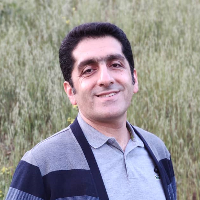Understanding Land Use Changes in Zebarkhan Rural Area Using Analysis of Satellite Images in ENVI Environment
Author(s):
Article Type:
Research/Original Article (دارای رتبه معتبر)
Abstract:
Detecting land use changes is essential for managers and planners because land use has changed widely. Being aware of these changes can help the policy-making process and solving existing problems. Therefore, preparing a land use map is one of the requirements of any development planning at the national and regional level. Such maps enable managers, planners and experts to design and implement the necessary measures in the field of solving problems and meeting present and future needs by identifying the current situation and comparing capabilities and potentials. Nowadays, due to the high cost of preparing land use maps with traditional and manual methods, remote sensing can help engineers with more accuracy and speed in preparing land use maps and evaluating changes in the region. The aim of the current research is to prepare land use maps of Zabarkhan district and monitoring land use changes in this area from 1996 to 2019 using Landsat 5 and 8 satellite images related to TM and OLI sensors. According to the findings, the uses of agricultural lands, built lands and pastures have increased during this period, while barren lands and gardens have decreased. Built-up lands include urban, rural, tourism (wildlife park, ecotourism residence), industrial, workshop, facilities, communication (regional and local roads), military, mining and water storage resources for agriculture. The highest rate of increase is related to urban and rural uses with 461.43 hectares, equivalent to 54.01% of all uses.
Keywords:
Language:
Persian
Published:
Journal of Physical Development Planning, Volume:7 Issue: 27, 2023
Pages:
15 to 32
https://www.magiran.com/p2535855
سامانه نویسندگان
مقالات دیگری از این نویسنده (گان)
-
Participatory Rural Development Planning: Insights from Shahdad District
Hamid Jalalian *, Asghar Tahmasebi, , Mojde Kalantarzade
Journal of Sustainable Rural Development, Autumn and Winter 2024



